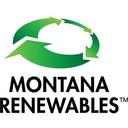Whether 45Z can be the motivating factor to help incentivize that growth for the SAF industry still remains to be seen and is clouded by uncertainty—just like its rollout.
Honeywell on Feb. 26 announced that Taiyo Oil Co. Ltd. has chosen the Honeywell UOP Ethanol to Jet (ETJ) technology to produce sustainable aviation fuel (SAF) at its Okinawa Operations in Japan. The facility is expected to begin operations in 2029.
A group of 70-plus stakeholders in the e-SAF industry are encouraging EU officials to implement five policy changes to encourage e-SAF development. The suggested changes aim to overcome investor barriers and accelerate progress.
Haffner Energy, a solid biomass-to-clean fuels solutions provider, and ATOBA Energy, a sustainable aviation fuel (SAF) aggregator, are joining forces to accelerate the development of SAF projects and facilitate their financing.
The Minnesota Senate Taxes Committee on March 3 voted to approved legislation that aims to extend and expand the state’s existing tax credit for sustainable aviation fuel (SAF), which was established in 2023.
The U.K. government on March 3 opened a public consultation on a SAF revenue certainty scheme, which aims to reduce financial risks for emerging SAF producers. The scheme complements the U.K.’s SAF mandate, which came into force Jan. 1, 2025.
The U.S. strongly objects to a recommendation on “sustainable” aviation fuels focused on multi-cropping made during the 13th triennial meeting of the ICAO Committee on Aviation Environmental Protection.
Calumet Inc. released Q4 financial results on Feb. 28. During an earnings call, company officials discussed operations at its Montana Renewables facility, changing market dynamics for biobased-based diesel, and the company’s MaxSAF initiative.
Comstock Inc. on Feb. 28 announced a new $14 million investment and strategic collaboration with Marathon Petroleum Corp. to advance its lignocellulosic biomass refining solutions to commercial maturity.
Rep. Max Miller, R-Ohio, on Feb. 27 reintroduced the Farm to Fly Act, a bill that aims to accelerate the production and development of sustainable aviation fuel (SAF). Companion legislation was reintroduced in the Senate during January.
The General Court of the European Union on Feb. 27 dismissed a challenge against the ReFuelEU Aviation regulations brought by European biofuel producers last year regarding regulation’s exclusion of crop-based fuels.
The Sustainable Aviation Fuel Coalition met with key lawmakers on Capitol Hill on Feb. 26 to discuss critical policies supporting the domestic growth and adoption of sustainable aviation fuel (SAF) in the U.S.
A planned sustainable aviation fuels (SAF) production facility being developed by SkyNRG Americas in Walla Walla, Washington, has been awarded a new $1.5 million grant from the Washington State Department of Commerce.
The Singapore Airlines Group has signed a memorandum of understanding (MoU) to potentially source neat SAF from Aether Fuels, a climate technology firm that plans to set up SAF production plants in the U.S. and South East Asia.
XCF Global Capital Inc. on Feb. 24 announced that New Rise Renewables LLC has commenced production of neat SAF. The company has also entered into an irrevocable corporate purchase order for the sale of more than 3 million gallons of SAF.
Air Products on Feb. 24 announced its has terminated its agreement with World Energy for the sustainable aviation fuel (SAF) expansion project in Paramount, California. According to World Energy, current operations at the Paramount facility are not affected.
LanzaJet on Feb. 24 announced that Cosmo Oil Co. Ltd. has been selected for a FY2024 subsidy from Japan's Ministry of Economy, Trade and Industry to support a project developed with Mitsui & Co. that will plan to utilize LanzaJet technology.
MOL Group has produced a diesel fuel containing hydrotreated vegetable oil (HVO), and sustainable aviation fuel (SAF) at the refinery of Slovnaft in Bratislava. The quality of the products has been verified by radioisotope analysis.
Nippon Paper Industries Co. Ltd., Sumitomo Corp., and Green Earth Institute Co. Ltd. have announced plans to form a JV, Morisora Bio Refinery LLC, which will focus on the production and sale of ethanol and chemicals from woody biomass.
OMV Petrom has announced the start of construction for a sustainable aviation fuel (SAF) and renewable diesel (HVO) production unit at the Petrobrazi refinery in Romania. The new facility will have an annual capacity of 250,000 tons.
CVR pauses development of potential SAF projects pending regulatory, tax credit clarity
CVR Energy Inc. released fourth quarter financial results on Feb. 18, reporting reduced renewable diesel production. The company also said it is pausing development of SAF capacity pending clarity on government subsidies.
The U.S. EIA maintained its forecasts for 2025 and 2026 renewable diesel production in its latest Short-Term Energy Outlook, released Feb. 11. The production outlook for other biofuels, including SAF, was also maintained.
Calumet Inc. on Feb. 18 announced that its subsidiary Montana Renewables LLC has received the first drawdown of approximately $782 million from its $1.44 billion U.S. DOE loan guarantee. The loan will fund the expansion of SAF production capacity.
Neste Corp. on Feb. 13 released fourth quarter financial results, reporting that its renewables segment was impacted by both market and operational challenges during the three-month period. Sustainable aviation fuel (SAF) sales, however, were up.
Gevo Inc. and Axens have announced the formation of a new strategic alliance to accelerate development and commercialization of sustainable aviation fuel (SAF) using the ethanol-to-jet (ETJ) pathway.
At the FrontFuel SynFuels demonstration project in Foulum, Denmark, Topsoe and Sasol have successfully converted biogas and CO2 to a synthetic crude.
Key players in Europe’s aviation industry, including airlines, airports and manufacturers have outlined to EU policymakers seven critical measures to stimulate sustainable aviation fuel (SAF) production in Europe.
Jord AB and Votion Biorefineries AB have announced a strategic partnership to convert Jord’s sustainable C4-grass biomass into biocrude and sustainable aviation fuel (SAF). This collaboration aims to accelerate the global energy transition.
Signature of a term sheet to combine 2 technologies and bring SAF production to the next level
By Global Bioenergies
February 11, 2025
Global Bioenergies has signed a term sheet with a large international industrialist (undisclosed) to co-develop a process leading to sustainable aviation fuels (SAF) at a reduced cost and an improved CO2 reduction.
Advertisement




























